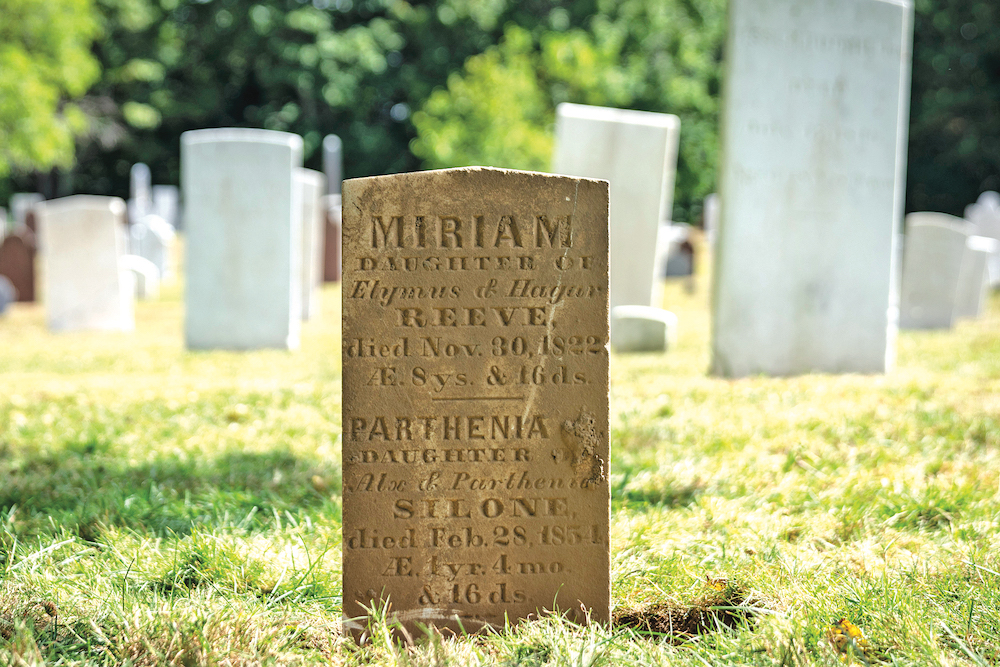Column: Discovery sheds light on history of slavery

In 1940, when Southold was preparing to celebrate its 300th anniversary, restoration work was done on The Old House in Cutchogue. During that process, something was discovered under a section of the hearth that, seen through a modern-day lens, is important.
What was found, according to the July 1940 issue of Old Time New England magazine, was this: an “iron wristlet or anklet, lined with leather.” The author of the story, noted New England architect Frank Chouteau Brown, speculated that the device was used on “one of the members of an early family [who] was feeble-minded and kept chained to the fireplace corner …”
That was a guess, of course, as Mr. Brown cited a local “legend” that an old Southold family who once lived in the house had someone with them who needed to be forcibly restrained.
Legend and oral history have their place in a community’s folklore. But neither is well-grounded history. So there is another possible purpose for this object, which might also be called a shackle: It was used on a slave.
Generations ago, the history of slavery on the North Fork was not high on the list of locally studied subjects. That is not to say it was completely ignored, or that early town historians like Wayland Jefferson pretended there were no slaves here. But it’s interesting that nothing resembling the “anklet” Mr. Brown described exists today in the Cut-chogue-New Suffolk Historical Council’s collection of artifacts. No one can say what became of it.
Town records in both Riverhead and Southold show that prominent local families owned slaves. And the history of slavery at Sylvester Manor on Shelter Island is well documented, to the great credit of the people who have managed that remarkable place, where the past is confronted head on.
But it is safe to say that the stories of those who were enslaved — What were their names? Where did they come from? Which of the so-called founding families owned them? — were not an integral part of the published history of Southold and Riverhead.
There were other stories to tell that painted a far brighter picture of the past here, portraying the ancestors of those town historians and writers as pioneers whose lives should be cele-brated — to the exclusion of others’.
That is not to say their lives should not have been celebrated. It’s just that their stories were not the only ones worth telling. No serious historian today could argue that slavery was not the cause of the Civil War, even though for generations, some Southern historians wrote just that. History is a wheel that keeps turning.
What was written about the North Fork then were stories seen through a small focal point, often by people who seem less interested in history than in celebrating their own genealogy or that of their benefactors.
Consider a discovery made recently at the Old Cutchogue Burying Ground by Boy Scout Joe DePinto, 16, during restoration work there for his Eagle Scout project. While digging out buried pieces of granite fence posts, Joe uncovered a previously unknown headstone and four footstones.
Examining Joe’s find, Zachary Studenroth, director of the Cutchogue-New Suffolk Historical Council, determined that the headstone belonged to two African-American children whose parents — almost certainly former slaves — are also buried on the grounds.
In an email on Tuesday, Mr. Studenroth called the discovery “the most important event to date in a restoration project at the Old Cutchogue Burying Ground” and “a unique record” of the lives of Cutchogue’s early African-American community.
It also brings us back to the importance of archeology and archival work, as history is always a work in progress. But this discovery — and the “anklet” mentioned in the 1940 article — are strong indicators that the story of slavery on the North Fork remains largely untold.
The author is the executive editor of The Suffolk Times and Riverhead News-Review. He can be reached at [email protected].
Photo caption: The headstone at the Old Cutchogue Burying Ground. (Jeremy Garretson photo)









